Ever leave the table stuffed and sleepy? You are not alone. Learning how to eat in portion control turns that heavy feeling into steady energy without strict dieting.
Portion control means choosing the right amount of food for your body. It helps you feel satisfied, not full to the brim. The benefits show up fast. You get better energy, easier weight loss, and steadier blood sugar. This is a friendly approach with no guilt, just practical steps you can use today.
How to eat in portion control, simple steps that work
Portion control is not about eating tiny meals. It is about choosing amounts that match your needs, then building plates that fill you up without spillover. Think of it like setting your car’s cruise control. You are still moving forward, just at a speed that fits the road.
Why it helps comes down to hunger signals and calorie density. When you eat the right amount of protein, fiber, and fat, your stomach and brain agree you are full. When the meal size fits you, you stop before that heavy, sluggish feeling hits.
Here are simple wins that work:
- Eat from a plate, not the bag. Packages mute your internal brakes.
- Start meals with vegetables or a broth soup. Volume first takes the edge off hunger.
- Use your hands to guide amounts. Your palm and fist fit your body better than a random cup.
- Add protein to every meal. Protein slows digestion, so you stay full longer.
- Pour sauces and dressings on the side. You control each bite.
A helpful truth, portion control is flexible. Your needs change with sleep, activity, and stress. Some days you need a little more. Other days a little less. You are not stuck with rigid rules. You are building awareness and a toolbox you can use anywhere.
Portion control vs. calorie counting
Portion control focuses on the size and balance of each meal. Calorie counting tracks every bite to hit a daily total. Calorie counting can help if you like numbers or have a strict goal. For most people, start with portion control because it builds habits you can keep without constant math.
Find your baseline serving sizes
Check the Nutrition Facts label. Look at serving size and servings per container. A serving is the amount listed on the label. A portion is the amount you choose to eat.
To see your normal, measure your usual cereal, pasta, or peanut butter for three days. No judgment, just data. You might discover your cereal bowl fits two servings. Or your pasta mound is closer to three. Knowing your baseline makes smart changes easier.
Use the hand method and the plate method
Use hand cues that fit your body:
- Protein: 1 palm per meal for most adults.
- Carbs: 1 fist of fruit or whole grains.
- Starchy carbs: 1 cupped hand of rice, pasta, or potatoes.
- Fats: 1 thumb of oils, nut butter, or cheese.
Build a balanced plate:
- Half non-starchy vegetables.
- One fourth lean protein.
- One fourth whole grains or starchy vegetables.
- A small amount of fat.
Quick meal examples:
- Grilled chicken, brown rice, roasted broccoli, plus a drizzle of olive oil.
- Lentil chili over baked sweet potato, side salad with vinaigrette.
Macros that help you feel full
Protein, fiber, and healthy fats keep you satisfied. High sugar foods spike and crash, so hunger comes back fast.
Simple targets per meal:
- Protein: about a palm, like eggs, yogurt, beans, chicken, or tofu.
- Fiber rich carbs: beans, oats, berries, apples, quinoa, or sweet potatoes.
- Healthy fats: avocado, nuts, seeds, olive oil, or tahini, about a thumb.
Build each plate around these, then adjust portions based on hunger and activity.
Portion control made easy with visual guides you can trust
You do not need a measuring scale to eat well. Use visual cues and tools you already have at home, school, work, and restaurants. If you can eyeball a portion, you can control a portion. These tricks work the same day you try them.
- Serve meals on a plate, not a pan or pot. Your brain reads edges as a stop sign.
- Keep taller, narrower glasses for juice or soda. The shape cuts overpouring.
- Pre-portion snacks before sitting down. Decide once, not ten times.
The goal is simple, make your default choice the right size. You still eat foods you love. You just pick how much with a clear view.
Plate and bowl swaps that cut portions without hunger
Use an 8 to 9 inch dinner plate for most meals. Switch to smaller cereal bowls so your usual pour matches one serving. Choose tall, skinny glasses for juice or sweet drinks. These swaps reduce overeating because plates and bowls set your eyes’ expectations.
Note for athletes or very active teens, you may need larger portions or extra snacks. Use the same plate mix, then add a second serving of carbs or protein as needed.
Use your hand, spoon, and cup as quick measuring guides
Common visuals help you estimate anywhere:
- 1 cup equals a closed fist.
- 2 tablespoons equals a golf ball.
- 1 teaspoon equals a fingertip.
Examples:
- Protein: palm of chicken, fish, tofu, or beans.
- Carbs: fist of fruit, whole grains, or starchy veg.
- Fats: thumb of peanut butter, mayo, cheese, or oil.
- Treats: golf ball of ice cream or nuts, small handful of chips.
Friendly rule, when in doubt, start smaller, then add more if you are still hungry after a pause.
Pre-portion snacks and leftovers for auto control
Set up clear containers, snack bags, or silicone cups. Portion nuts, chips, crackers, or sweets before you eat. Future you will thank you. Use the one plate and one bowl rule for meals. Everything you plan to eat goes on that plate or in that bowl.
A simple trick, fill snack containers right after grocery shopping, before you get hungry. You are making decisions while calm, not when your stomach is in charge.
Restaurant and takeout tips that still feel fun
Try these four moves:
- Share a meal or split a large entrée.
- Ask for a box and pack half before your first bite.
- Order a side veggie or salad to fill half your plate.
- Choose grilled or baked over fried.
Keep sauces and dressings on the side. Dip your fork in the sauce, then the food. It adds flavor with less quantity.
Quick script for friends: “This looks huge. Want to split and add a side salad?” Most people agree, and you save money too.
Plan balanced meals that fill you up without overeating
You do not need a perfect meal plan. You need simple frameworks that build meals you enjoy. Focus on calorie density and volume. Lower density foods like vegetables, fruit, yogurt, and broth soups let you eat more food for fewer calories. That means bigger, satisfying plates without the crash.
Use these basics across breakfast, lunch, dinner, and snacks:
- Start with a base of vegetables or fruit.
- Add a palm of protein.
- Add a fist of carbs, choose whole when possible.
- Add a thumb of fat for flavor and fullness.
This pattern fits every cuisine and budget. It also plays well with your favorite seasonings and sauces.
Build a balanced plate at home
Follow this order:
- Fill half your plate with vegetables.
- Add a palm of protein.
- Add a fist of carbs.
- Add a thumb of fat.
Two full plate examples:
- Chicken, brown rice, broccoli, olive oil drizzle, lemon.
- Salmon, baked sweet potato, green beans, yogurt herb sauce.
Volume eating with high fiber, low calorie foods
Calorie density means how many calories are packed into a small space. Some foods, like leafy greens and broth soups, are light and bulky. You can eat more and feel full.
Great picks:
- Big salads with beans, crunchy veggies, and a spoon of nuts.
- Veggie soups with chicken or lentils.
- Berries with yogurt for a sweet, high fiber finish.
Easy swaps:
- Swap half your pasta for zucchini or spaghetti squash.
- Swap chips for air-popped popcorn with a sprinkle of salt.
Right size ideas for breakfast and lunch
Quick breakfast ideas:
- Scramble a palm of eggs, add spinach, plus a fist of fruit.
- Greek yogurt cup, fist of berries, thumb of nuts or seeds.
- Oatmeal, a fist cooked, thumb of peanut butter, sprinkle of cinnamon.
Easy lunch ideas:
- Turkey sandwich, palm of turkey, whole grain bread, veggie pile, vinaigrette.
- Bean and rice bowl, palm of beans, cupped hand of rice, salsa, avocado thumb.
- Leftover salmon, fist of roasted potatoes, half plate mixed veggies.
Drinks, sauces, and extras that quietly add up
Common calorie traps:
- Sugary coffee, soda, juices.
- Creamy dressings and heavy mayo.
- Oils poured straight from the bottle.
Lighter swaps:
- Black coffee with a splash of milk.
- Seltzer with lime instead of soda.
- Vinaigrette or yogurt based sauces.
- Spray oil or measured oil with a spoon.
Small changes here protect your portions without shrinking your meals.
Mindful habits and light tracking to keep portions on track
Habits turn portion control into autopilot. Start with awareness for two weeks, then shift to easy routines. Keep it low stress and flexible. You are training your eye and your appetite to work together again.
Ideas that work:
- Eat without your phone at one meal a day.
- Serve yourself, then sit down. No grazing, no pan tasting.
- Pause at halftime. Check if you are still hungry for more.
You get better at this fast when you give yourself a calm pace and clear cues.
Eat slower and check a hunger scale
Use a simple 1 to 10 hunger scale. One means starving. Ten means stuffed. Start eating around a 3 or 4. Stop around a 6 or 7. Put your fork down between bites. Sip water. Set a 15 minute meal timer. Most hunger fades after a few minutes, so slowing down helps you feel the stop.
Simple rules that fit real life
Pick two rules this week:
- One plate per meal.
- No eating from bags or cartons.
- Portion sweets into small bowls.
- Add one vegetable to every meal.
Track how you feel for a few days. Keep the rules that make meals easier, not harder.
Light tracking for two weeks, then go by feel
Try one quick method:
- Snap photos of your meals.
- Write one line in a notes app.
- Tick boxes for protein, veggie, carb, and fat.
After two weeks, keep only the habit that helped most. No calorie math needed. You will have a visual library of right size meals that work for you.
Weekends, parties, and holidays without guilt
Go in with a plan:
- Eat a protein rich snack before you leave.
- Scan the table, then build a small balanced plate.
- Enjoy your favorite treat on purpose, not by accident.
- Walk, dance, or play after if you can.
One fun meal does not ruin progress. Get back to your normal portions at the next meal and move on.
Conclusion
Portion control is not punishment, it is a practical way to build right size meals that fit your body. Start small, be consistent, and you will feel the difference in energy, comfort, and control. Pick two tips from this guide and try them this week. If you forget, no big deal. Come back to the basics and keep practicing how to eat in portion control, one plate at a time.
Quick 3 step checklist:
- Fill half your plate with veggies, add a palm of protein.
- Use your hand as your guide, then pause halfway.
- Pre-portion snacks and keep sauces on the side.
Related post: Lose Weight Without Counting Calories
How to Eat In Portion Control: FAQs
What does portion control actually mean?
Portion control means eating a set amount of food at a meal or snack. It helps manage calories, hunger, and blood sugar. You can still enjoy favorite foods, just in planned amounts.
How do I estimate portions without a scale?
Use your hand. Palm for protein, fist for carbs like rice or pasta, cupped hand for fruit or beans, thumb for fats like peanut butter or cheese. It is not perfect, but it is close and very handy.
How many portions should I eat at each meal?
Aim for a balanced plate. Half nonstarchy veggies, a palm of protein, a fist of carbs or starchy veggies, and a thumb of healthy fats. Adjust based on hunger, activity, and goals.
Will I feel hungry if I cut portions?
Not if you plan well. Add fiber, protein, and water-rich foods. Think eggs with veggies, Greek yogurt with berries, or chicken with beans and salad. Slow down and sip water before and during meals.
What is the difference between a serving and a portion?
A serving is a standard amount on labels or guidelines. A portion is what you actually eat. You can eat more or less than one serving. Reading labels helps you compare.
How can I control portions when eating out?
Scan the menu for protein and veggies, then share, split, or box half before you start. Skip endless bread or chips, ask for dressing and sauces on the side, and choose water or unsweet tea.
Do I need to weigh and measure everything?
Not forever. Measure for a week or two to learn what portions look like. Then use visual cues and your hand. Recheck now and then if portions creep up.
What are smart snack portions?
Pair protein or healthy fat with fiber. Examples, apple with 1 to 2 tablespoons peanut butter, Greek yogurt with nuts, hummus with carrots, cheese with whole grain crackers. Keep snacks around 150 to 250 calories if you are trying to lose weight.
How do I handle desserts and treats?
Plan them. Choose a small portion, like a few bites of cake or a small cookie. Eat slowly, enjoy it, then move on. Do not keep trigger foods in plain sight at home.
What role do liquids play in portion control?
Liquids add calories fast. Soda, sweet coffee drinks, fruit juice, and alcohol can stall progress. Choose water, seltzer, black coffee, or unsweet tea most of the time. Set a limit for alcohol, like 1 drink, and have it with food.
Can I still eat carbs?
Yes. Pick high fiber carbs most of the time, like oats, beans, quinoa, brown rice, and fruit. Keep portions to about a fist at meals. Add protein and veggies to steady blood sugar.
How do I eat enough if I work out a lot?
Athletes and very active people need larger portions, especially carbs. Add an extra fist of carbs around workouts, plus more protein and fluids. Listen to hunger cues and track performance.
What if I overeat at a meal?
Do not skip the next meal. Get back to your usual portions, hydrate, and add a high fiber, high protein meal later. A single meal will not undo your progress. Patterns matter most.
How can I spot hidden large portions at home?
Use smaller plates and bowls, pre-plate food instead of eating from the package, and keep serving dishes off the table. Store leftovers in single-serve containers. Pre-portion snacks the day you shop.
Do fiber and protein really help with portion control?
Yes. Protein and fiber increase fullness hormones and slow digestion. Aim for 20 to 30 grams of protein per meal and at least 25 to 38 grams of fiber per day from plants.
How do labels help with portion control?
Check serving size first. Then look at calories, protein, fiber, and added sugars per serving. Many packages have more than one serving. If you eat the whole pack, multiply the numbers.
Are low calorie foods always the best choice?
Not always. Very low calorie foods can leave you hungry and lead to overeating later. Aim for meals with volume, fiber, protein, and some fat. Think veggie omelet with avocado and toast.
How do holidays and parties fit in?
Plan your plate, then enjoy the event. Start with protein and veggies, add your favorite carb or dessert in a small portion, and sip water between drinks. Stand away from the buffet.
What if my culture uses shared dishes?
Take a small plate and build your portions there. Fill half with veggies or salad, add a palm of protein, and a fist of rice, bread, or starch. Go back for more veggies if you are still hungry.
Can kids use portion control?
Yes, but avoid strict rules. Offer balanced meals, let kids serve themselves with guidance, and respect natural hunger and fullness. Keep sweets occasional and not a reward.
Does timing matter for portion control?
Regular meals help. Long gaps can lead to overeating. Most people do well with 3 meals and 1 snack, or 3 meals alone if they are not hungry between.
How do I tune into hunger and fullness?
Pause mid-meal and ask, am I still hungry, or just tasting? Eat to comfortable, not stuffed. Put your fork down between bites. It takes about 15 to 20 minutes for fullness signals to register.
Is portion control different for diabetes or heart disease?
Portions still count, but focus on carbs, fiber, sodium, and fats. Keep carb portions steady, choose high fiber carbs, lean proteins, and limit high sodium foods. Work with your care team for targets.
What tools actually help?
Measuring cups, a food scale, smaller plates, single-serve storage, and clear snack bags. A simple habit tracker or photo log can keep you honest without heavy tracking.
How long until portion control feels natural?
Usually a few weeks. Practice at each meal, use the same visual cues, and review once a week. Small, repeatable steps stick better than big, strict changes.


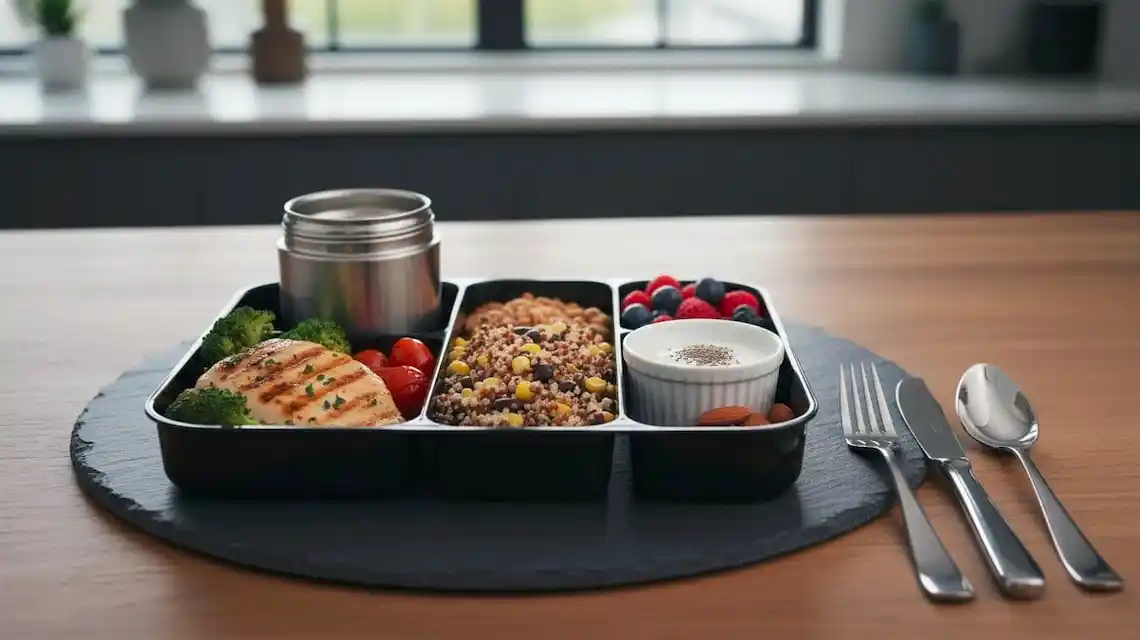

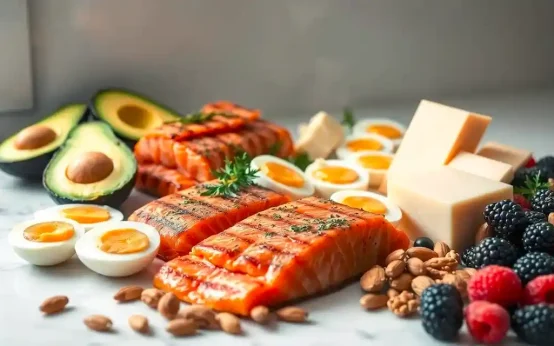 The Best Food for the Keto Diet
The Best Food for the Keto Diet 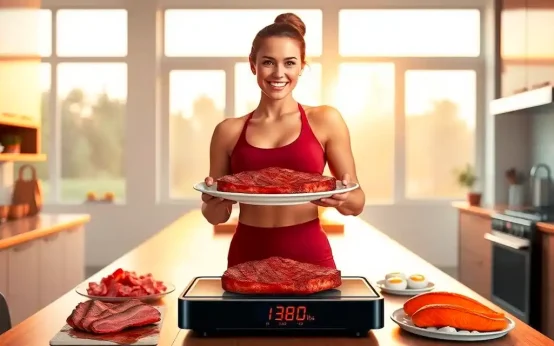 Can You Lose Weight on Carnivore Diet?
Can You Lose Weight on Carnivore Diet?  High Protein Meal Prep Ideas for the Week
High Protein Meal Prep Ideas for the Week 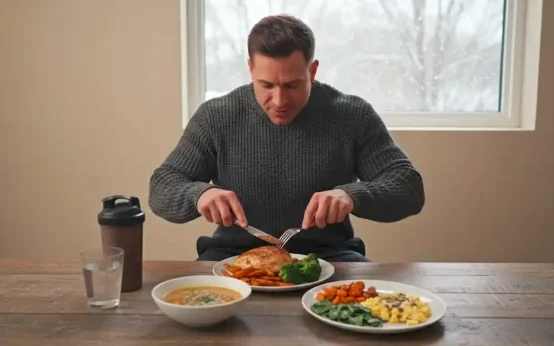 Eating During Winter to Maintain Muscle Mass
Eating During Winter to Maintain Muscle Mass 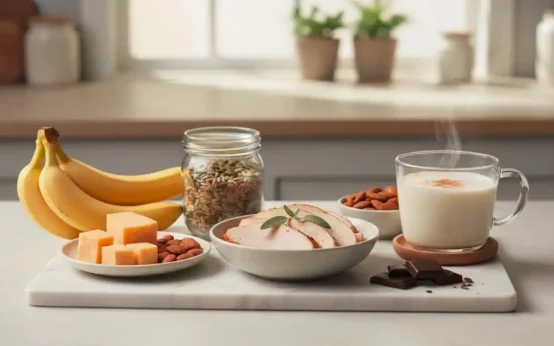 Tryptophan Snacks for Intermittent Fasting
Tryptophan Snacks for Intermittent Fasting  How Your Diet Can Help With Aging Skin
How Your Diet Can Help With Aging Skin